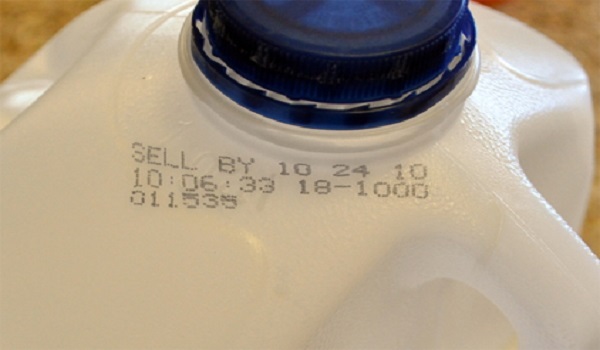Introduction
In order to fulfil the high production demands of the dairy sector, manufacturers must invest the required time and seek competent advice on suitable techniques to maintain high production rates and throughput while minimising downtime.
Before being dispatched from the manufacturer, dairy products must have variable data tagged onto the secondary packaging. Automated labelling technology should be a consideration for manufacturers to boost production in order to keep up with this fast-paced and high-demand sector within the food and drink industry. We examine the difficulties dairy producers have and the labelling technologies they might include in their manufacturing process to meet those difficulties.
The mandatory location of the coded data
Variable data must be coded, tagged, and/or labelled on the package of all dairy products. To guarantee that each product is safe to sell, safe to consume, and of the desired quality, for instance, “best-before” and “use-by” dates are essential for merchants and customers.
Dairy producers must carefully evaluate where to print this information on a carton. ‘Best-before’ dates are frequently printed on a pack’s seal or lid. However, the consumer does not need to read this information before discarding these package elements. Since additional information is either pre-printed or added during production, manufacturers have begun to incorporate this kind of information into the main body of the pack. Secondary and tertiary packaging must also include the same information, in addition to logistics and traceability data.
Focusing on the demands for automated labelling, the equipment must be versatile in its application capabilities to guarantee that a high-quality print is applied to the pack, overcoming problems posed by the packaging material, narrow spacing, and damp and muggy manufacturing conditions.
A project with a tight deadline
Dairy products have varying shelf lives. Yoghurt, for instance, typically has a shelf life of 1-2 weeks, while pasteurised whole milk, if stored below 4°C, might last 12–14 days. Most dairy products have a limited shelf life; therefore, makers must produce quickly. Dairy manufacturing is already complicated, and the diversity of product varieties, packaging styles, and flavours on the market now only makes it more difficult to fulfil manufacturers’ demands.
For dairy manufacturing to succeed and to maintain a quick time to market, maintaining production uptime is essential. Manufacturers must employ labelling equipment that can match high production rates, achieve high product throughput, and be adaptable enough for product changes in order to meet these needs.
Print labels and apply them (LPA)
Manufacturers may generate labels and apply them directly to products and their packaging by using print-and-apply labelling. These labels may accurately and affordably convey data such as alphanumeric text, barcodes, serialisation, images, and more. When marking items for transportation and storage, print-and-apply labelling is frequently used on secondary packagings, such as cheese boxes or a pack of shrink-wrapped milk bottles. Tertiary pallet labelling, which is the automated application of the logistics labels at the conclusion of the production process and enables the pallet or logistics unit to be identified and tracked along the whole supply chain, can also be used.
Automated labelling vendors can offer manufacturers a ‘Zero Downtime (ZDT)’ solution in which two labellers are networked together on one line to satisfy the demands of a dairy production line. Operators may restock the primary labeller’s label supply while production continues, even at high rates, since the secondary labeller automatically takes over when the primary labeller runs out of labels.
In general, an automated labelling procedure eliminates the requirement for operator application by hand. Using an automated application method instead of a manual one has the advantage of allowing the line workers to spend more time during operation hours on other crucial activities, like Total Productive Maintenance (TPM) and quality inspections.
This more efficient method will boost throughput and apply labels consistently and precisely. Printing and applying labelling come in a variety of ways to provide the flexibility required by a dairy company. Labels can be put on the sides, top, bottom, and front of packs, depending on the demands of the production line.
Please be aware that different product kinds and manufacturing lines will require specialised integration to maximise output; therefore, it’s necessary to speak with an expert in automated labelling technology before finding a suitable solution for your packaging line. The X36 x-ray inspection system may be used with Mettler-Toledo’s dual energy detection (DXD and DXD+) systems, which have also been produced.


